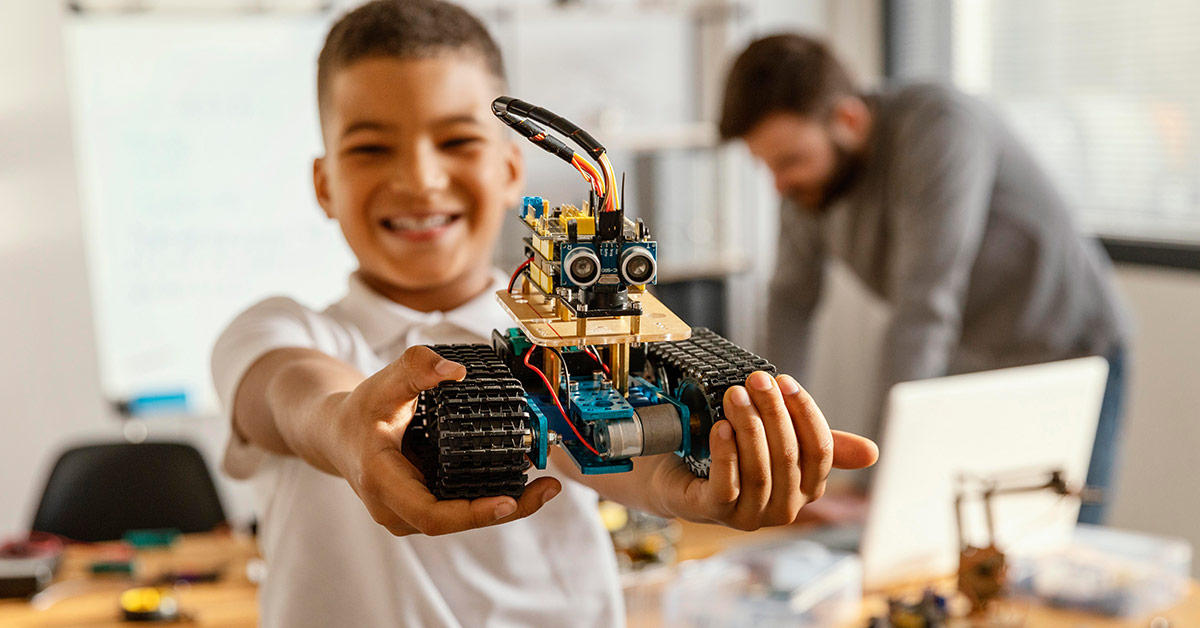Are you interested in teaching robotics to teens but don’t know where to start? Robotics is an exciting field that combines engineering, programming, and problem-solving skills. Teaching how to teach robotics for teens to teens can provide them with valuable skills that can be applied to their academic and professional careers. In this article, we will provide you with a comprehensive guide on how to teach robotics to teens.
Why Teach Robotics to Teens?
Before we dive into the details of teaching robotics to teens, let’s first understand why it’s important. Robotics can provide several benefits to teens, including:
- Developing problem-solving skills
- Enhancing creativity and innovation
- Improving teamwork and collaboration
- Boosting confidence and self-esteem
- Preparing for future careers in STEM fields
Teaching robotics to teens can also provide a fun and engaging way to learn about technology and engineering concepts.
Getting Started with Robotics
To get started with teaching robotics to teens, you’ll need some basic equipment and materials. Here are some essentials:
Robotics Kits
A robotics kit is a great way to introduce teens to robotics. Robotics kits come with all the necessary components to build a robot, including motors, sensors, and controllers. There are several robotics kits available in the market, such as Lego Mindstorms, VEX Robotics, and Arduino.
Software Tools
Programming is a crucial aspect of robotics. Teens will need to learn programming languages such as Python, C++, or Java. Some of the software tools that can be used for programming robots are:
- Scratch: Scratch is a visual programming language that is easy to learn and use. It’s a great tool for beginners.
- Arduino IDE: The Arduino IDE is an open-source software tool that is used for programming Arduino boards.
- RobotC: RobotC is a programming language that is designed specifically for robotics.
Learning Resources
There are several online resources available that can help teens learn about robotics. Some of the popular resources are:
- Code.org: Code.org is a non-profit organization that provides free coding lessons and resources for students of all ages.
- Khan Academy: Khan Academy offers free courses on coding, math, and science.
- YouTube: YouTube has several channels dedicated to teaching robotics, such as Adafruit, Make: Magazine, and SparkFun.
Teaching Robotics to Teens
Now that we have the basic equipment and materials, let’s dive into the details of teaching robotics to teens.
Start with the Basics
Before diving into advanced robotics concepts, it’s essential to start with the basics. Teens should first learn about the different components of a robot, such as motors, sensors, and controllers. They should also learn about basic programming concepts such as loops, conditionals, and variables.
Encourage Hands-On Learning
Teens learn best when they are actively involved in the learning process. Encourage hands-on learning having them build and program robots. This will help them apply the concepts they have learned and develop problem-solving skills.
Foster Collaboration
Collaboration is an essential aspect of robotics. Encourage teens to work in teams to build and program robots. This will help them develop teamwork and collaboration skills.
Emphasize Creativity and Innovation
Robotics is all about creativity and innovation. Encourage teens to think outside the box and come up with unique solutions to problems.
Provide Feedback and Support
Providing feedback and support is essential for the learning process. Encourage teens to ask questions and provide feedback on their projects. This will help them learn and improve their skills.
Conclusion
Teaching robotics to teens can provide valuable skills and prepare them for future careers in STEM fields. Starting with the basics, encouraging hands-on learning, fostering collaboration, emphasizing creativity and innovation, and providing feedback and support can help



